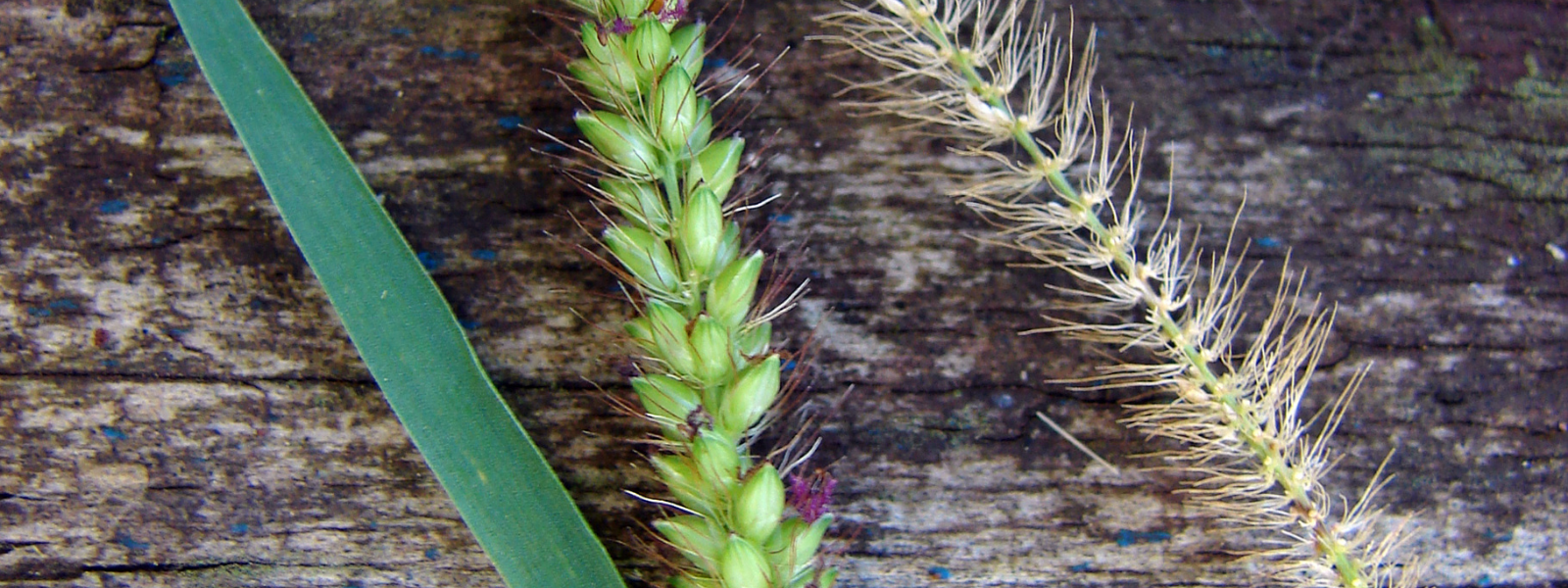
Common Name
Setaria, marsh bristlegrass, knotroot bristle-grass, bristly foxtail and yellow bristlegrass
Scientific Name
Setaria spp.
Family
Poaceae
Lifecycle
Annual or Perennial
Seasons of Growth
Year-round
Key Distinguishing Feature
Grass with compact, cylindrical seed heads
They typically grow during the warmer seasons, such as spring and summer, and may go dormant or die back during the colder months.
• Growth Form: Setaria species are typically bunchgrasses, meaning they form clumps or tufts of grass blades.
• Leaves: The leaves are long and narrow, with a linear shape. They are typically green but may vary in colour.
• Flowers: The inflorescences of Setaria species are distinctive and resemble a fox's tail, which gives them the common name "foxtail grasses." The inflorescences are densely packed with spikelets.
• Seeds: Setaria species produce seeds that are enclosed within bristly or hairy structures, which aid in seed dispersal.
• Habitat: Setaria species are commonly found in a variety of habitats, including grasslands, roadsides, and disturbed areas. Some species are cultivated for food or forage.
Ecological Impact:
• While some Setaria species are cultivated for food or forage, others are considered weedy and can be invasive in certain regions. Invasive Setaria species can displace native vegetation and affect ecosystem dynamics.
Control Methods:
• Control measures for weedy Setaria species may include mechanical removal, herbicide application, and cultural practices to prevent seed production and spread.
• Herbicides may be used for control, but care must be taken to use them safely and effectively, following local regulations.
Setaria species have both agricultural and ecological significance, with some being cultivated for food and forage, while others are managed as weeds due to their invasive tendencies. Management practices vary depending on the specific Setaria species and their intended use.




